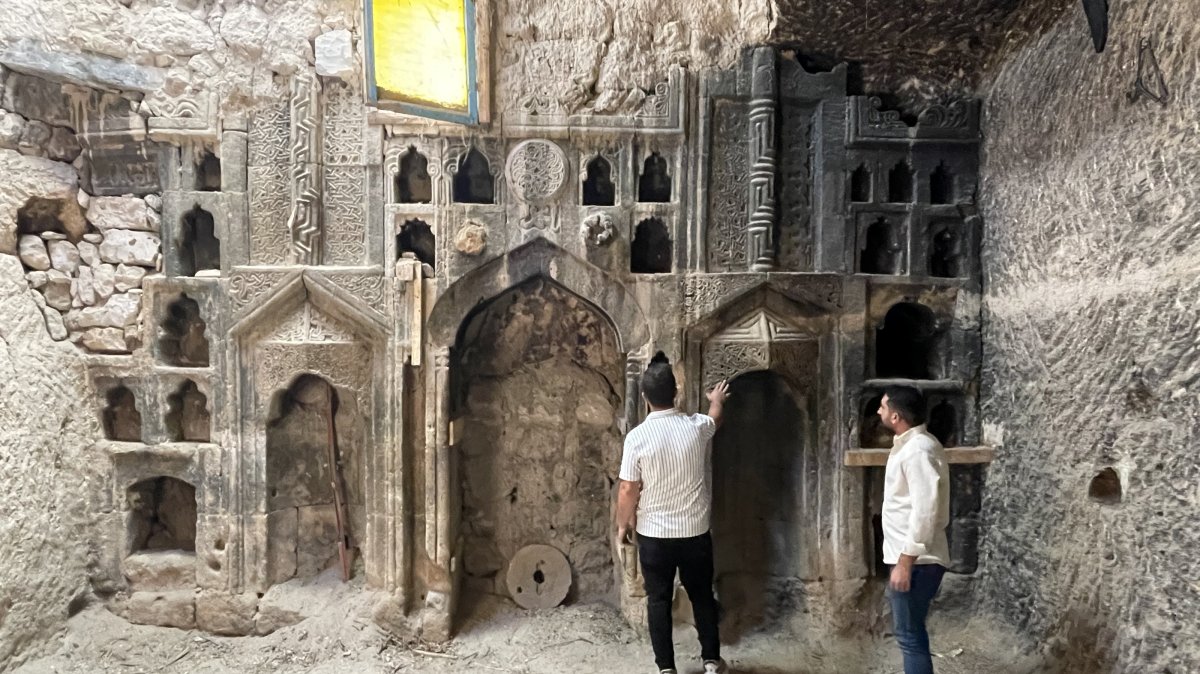A 600-year-old masjid dating to the late Anatolian beylik period has been discovered in the Taşkınpaşa village of Ürgüp, Nevşehir, during cleaning work in a rock-carved storeroom, researchers said Tuesday.
Art history experts from Nevşehir Hacı Bektaş Veli University’s Faculty of Arts and Sciences uncovered the structure, which includes an intricately crafted stone mihrab, while conducting a surface survey in the village that is home to the 16th-century Taşkınpaşa Madrasa and Mosque.
Associate Professor Savaş Maraşlı said there was no record of the site in any historical sources and that it shows traces from the Eretna Beylik period.
“The site, hidden for centuries, has survived in remarkable condition. It features decorations, materials and techniques familiar from the Seljuk era that continued into the beylik period,” Maraşlı told reporters.
Associate Professor Alper Altın said the discovery was “exciting” and that research will continue to determine the site’s original purpose. While its function is not yet certain, the presence of a mihrab indicates it was used for prayer.
Local resident Mehmet Ersen, 63, said tourists visiting decades ago mentioned a mosque, but no work had been carried out until now.

